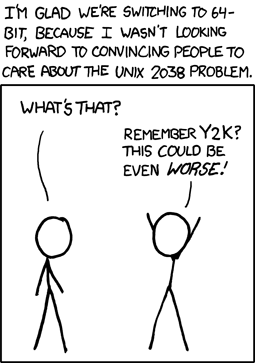

| Main index | Section 4 | Options |
| hw.nvme.use_nvd | |
| The nvme(4) driver will create nda device nodes for block storage when set to 0. Create nvd(4) device nodes for block storage when set to 1. See nvd(4) when set to 1. | |
| kern.cam.nda.nvd_compat | |
| When set to 1, nvd(4) aliases will be created for all nda devices, including partitions and other geom(4) providers that take their names from the disk's name. nvd devices will not, however, be reported in the kern.disks sysctl(8). | |
| kern.cam.nda.sort_io_queue | |
| This variable determines whether the software queued entries are sorted in LBA order or not. Sorting is almost always a waste of time. The default is to not sort. | |
| kern.cam.nda.enable_biospeedup | |
| This variable determines if the nda devices participate in the speedup protocol. When the device participates in the speedup, then when the upper layers send a BIO_SPEEDUP, all current BIO_DELETE requests not yet sent to the hardware are completed successfully immediate without sending them to the hardware. Used in low disk space scenarios when the filesystem encounters a critical shortage and needs blocks immediately. Since trims have maximum benefit when the LBA is unused for a long time, skipping the trim when space is needed for immediate writes results in little to no excess wear. When participation is disabled, BIO_SPEEDUP requests are ignored. | |
| kern.cam.nda.max_trim | |
| The maximum number of LBA ranges to be collected together for each DSM trims send to the hardware. Defaults to 256, which is the maximum number of ranges the protocol supports. Sometimes poor trim performance can be mitigated by limiting the number of ranges sent to the device. This value must be between 1 and 256 inclusive. | |
The following report per-device settings, and are read-only unless otherwise indicated. Replace N with the device unit number.
| kern.cam.nda.N.rotating | |
| This variable reports whether the storage volume is spinning or flash. Its value is hard coded to 0 indicating flash. | |
| kern.cam.nda.N.unmapped_io | |
| This variable reports whether the nda driver accepts unmapped I/O for this unit. | |
| kern.cam.nda.N.flags | |
| This variable reports the current flags. | |
| OPEN | |
| The device is open. | |
| DIRTY | |
| Set when a write to the drive is scheduled. Cleared after flush commands. | |
| SCTX_INIT | |
| Internal flag set after sysctl(8) nodes have been created. | |
| kern.cam.nda.N.sort_io_queue | |
| Same as the kern.cam.nda.sort_io_queue tunable. | |
| kern.cam.nda.N.trim_ticks | |
| Writable. When greater than zero, hold trims for up to this many ticks before sending to the drive. Sometimes waiting a little bit to collect more trims to send at one time improves trim performance. When 0, no delaying of trims are done. | |
| kern.cam.nda.N.trim_goal | |
| Writable. When delaying a bit to collect multiple trims, send the accumulated DSM TRIM to the drive. | |
| kern.cam.nda.N.trim_lbas | |
| Total number of LBAs that have been trimmed. | |
| kern.cam.nda.N.trim_ranges | |
| Total number of LBA ranges that have been trimmed. | |
| kern.cam.nda.N.trim_count | |
| Total number of trims sent to the hardware. | |
| kern.cam.nda.N.deletes | |
| Total number of BIO_DELETE requests queued to the device. | |
Namespaces are managed with the ns sub command of nvmecontrol(8). Not all drives support namespace management, but all drives support at least one namespace. Device nodes for nda will be created and destroyed dynamically as namespaces are activated or detached.
| /dev/nda* | |
| NVMe storage device nodes | |
| NDA (4) | June 6, 2020 |

| Main index | Section 4 | Options |
Please direct any comments about this manual page service to Ben Bullock. Privacy policy.
